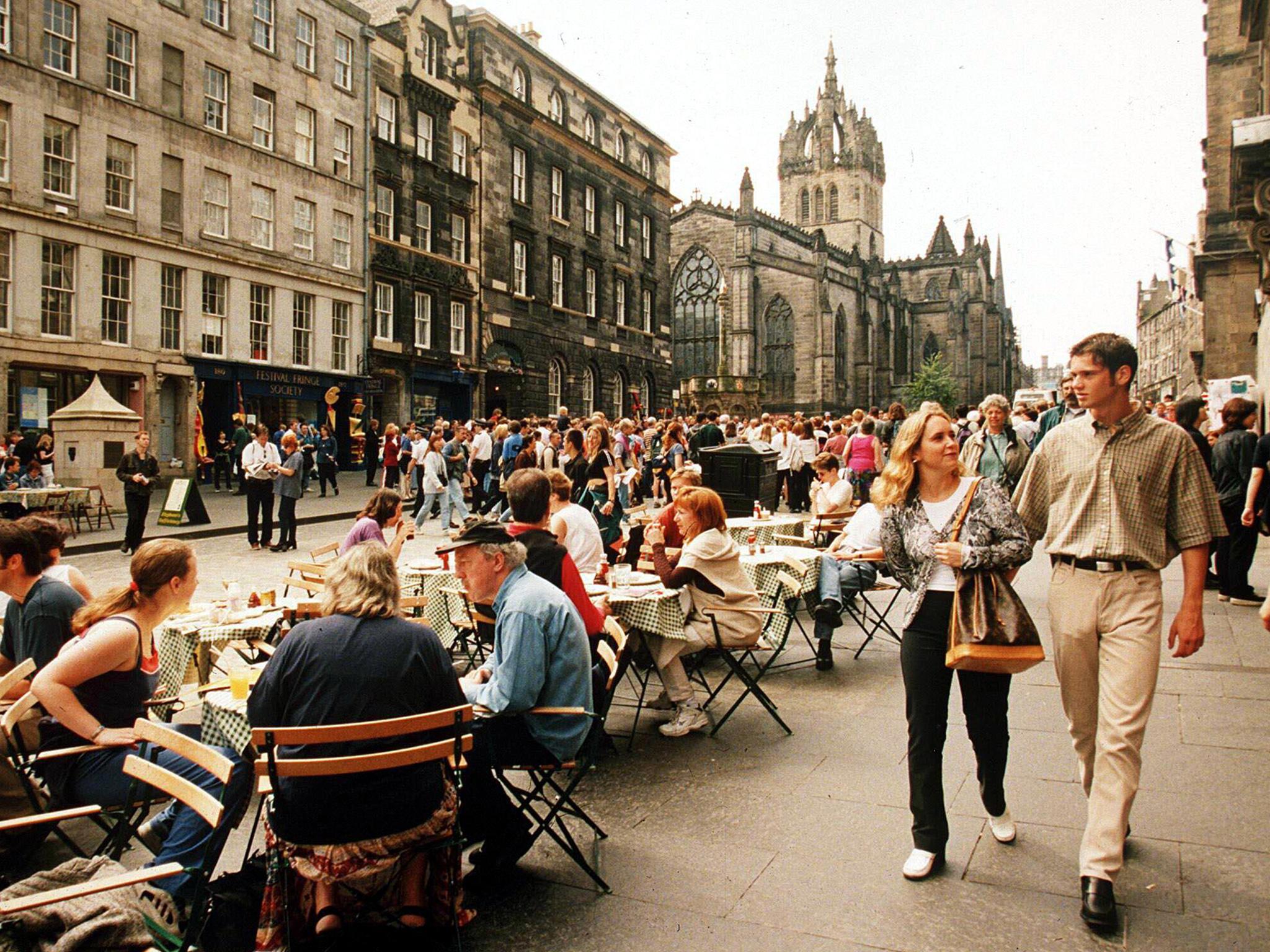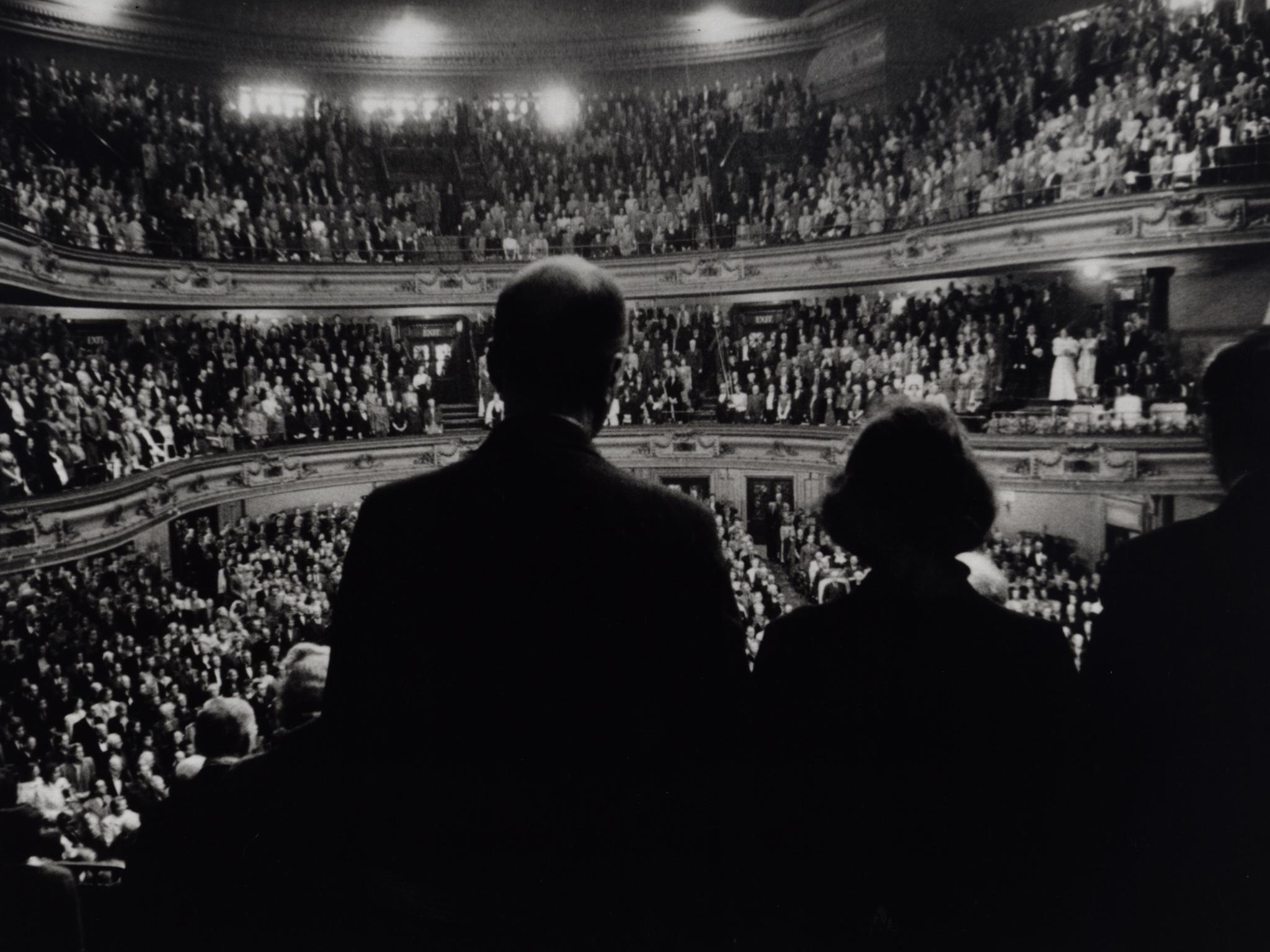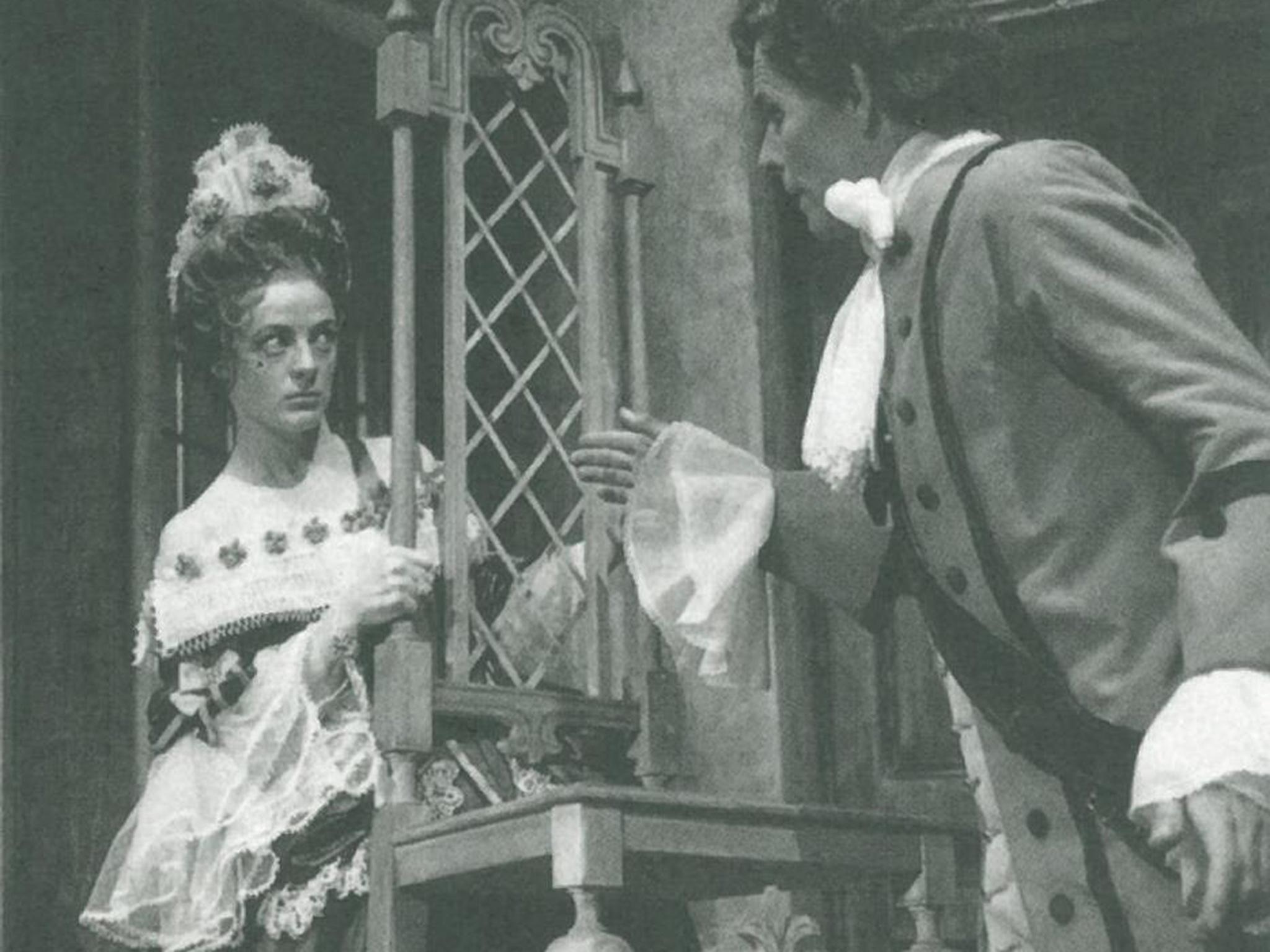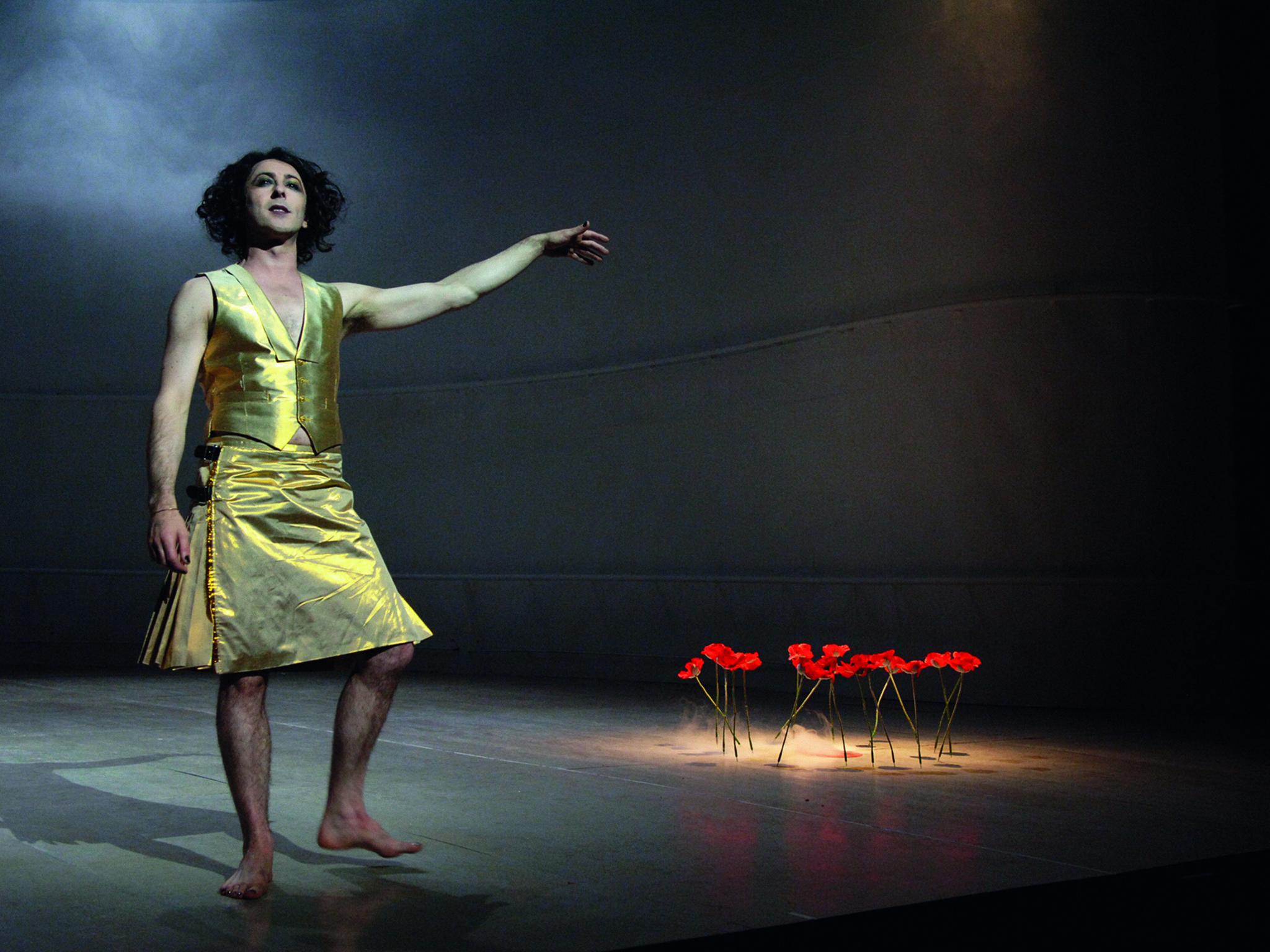Edinburgh Fringe 2018: How the legendary comedy and drama festival was founded
If it wasn't for its geography, it probably wouldn't have grown up in the Scottish capital at all

Your support helps us to tell the story
From reproductive rights to climate change to Big Tech, The Independent is on the ground when the story is developing. Whether it's investigating the financials of Elon Musk's pro-Trump PAC or producing our latest documentary, 'The A Word', which shines a light on the American women fighting for reproductive rights, we know how important it is to parse out the facts from the messaging.
At such a critical moment in US history, we need reporters on the ground. Your donation allows us to keep sending journalists to speak to both sides of the story.
The Independent is trusted by Americans across the entire political spectrum. And unlike many other quality news outlets, we choose not to lock Americans out of our reporting and analysis with paywalls. We believe quality journalism should be available to everyone, paid for by those who can afford it.
Your support makes all the difference.Edinburgh has much to thank its unique geography for, not least the rippling panorama of hills and inactive volcanoes – one of which has a castle perched on top of it – which give its centre a multi-storey effect and conspire to make it one of the world’s most beautiful cities. This geography, as much as anything, is the reason the Edinburgh Festival actually began in Edinburgh at all. The absence of any heavy industry within the city and the resulting lack of damage by German bombs dropped on it meant it was the perfect place to found an event in 1947 aimed at healing the wounds of a divided Europe through art and free expression.
Rudolf Bing, co-founder of the Glyndebourne Opera Festival and a Jewish-Austrian escapee from the Nazis, was the key instigator involved in creating an event which he hoped might “at this moment of European time, be of more than temporary significance and (which) might establish in Britain a centre of world resort for lovers of music, drama, opera, ballet and the graphic arts.” He had discussed the idea in conversations before the war had even finished, yet found options for a suitably-sized city curtailed by the number of ruined centres which were only just embarking on a drastic post-war rebuilding.

It was Harry Harvey Wood, a Scots writer and chair of the Scottish wing of the British Council, who proposed Edinburgh as a location, and Bing – who knew and loved the city, partly as it reminded him of Salzburg – agreed that it was perfect. With the aid of the city’s Lord Provost Sir John Falconer, Lady Eva Rosebery of nearby Dalmeny House and Sidney Newman, Reid Professor of Music at Edinburgh University, they announced in November 1945 that the festival would begin in 1947.
The very first “Edinburgh International Festival of Music and Drama”, as it was in its debut year, began on the 24th of August 1947 and ended on the 13th of September, and during that time presented a world-class array of what might have been considered the more highbrow arts. There was opera from the Glyndebourne company, classical concerts from the Viennese Philharmonic, dance from Sadler’s Wells and theatre from the Old Vic Company, and a young Alec Guinness played Richard III.
Most poignantly, and very much in keeping with the intended spirit of the festival, perhaps the greatest composer of the day, Bruno Walter, was reunited with the Viennese Philharmonic after spending the war in exile in the USA. “As soon as Walter came to the masters of the Austrian romantic school we were visited by an act of grace, by the felicity which is born of the feeling that this is exactly right,” wrote The Guardian’s classical critic at the time. Walter himself said that the festival had “renewed human relations”, and that he had appeared because “it was of the utmost importance… that all the ties which had been torn should be re-united.”

A contemporary report from The Manchester Evening News reported thousands of visitors to the city “in evening dress, a few in kilts and some in arty corduroys”, to whom “private householders have offered a spare bed or a sofa in the lounge.” It went on: “Said one Hungarian woman to me, summing it all up – the quiet Georgian squares with their gay window boxes, the lazy smoke haze, the incredible theatrical backdrop of the Castle – ‘It’s a mixture of Rome and Manchester, seasoned with a drop of Paris and a dash of Budapest.’”
The first festival had been a huge success, and it had been embraced by the city of Edinburgh itself as much as the visiting international community, giving its people a chance to think beyond the horrors of the war and the subsequent austerity. Yet not all felt included in this brave new adventure. Despite his relentless internationalism, Bing’s tastes tended towards the elitist and he had little knowledge of Scotland’s own homegrown – and more often than not, decidedly left-wing - culture; most significantly, the Glasgow Unity Theatre, which had links to the Communist Party of Great Britain, and which had staged Robert McLeish’s The Gorbals Story the previous year. The amateur play was a huge hit, with over six hundred stage appearances around the country by the time it closed, and it was seen at London’s Garrick Theatre in 1948 and on the big screen in 1950.
The Glasgow Unity Theatre were frankly not the kind of group to allow the rarefied tastes of the bourgeoisie to get in the way of staging a show, and they turned up for the Edinburgh Festival anyway. They were ready to start a ‘culture war’, funding themselves through performances of two shows, most pointedly a version of Gorky’s painfully class-ridden The Lower Depths at the Pleasance Lower Theatre.
They weren’t the only ones. In total a group of six Scottish and two English companies, the “uninvited eight”, turned up to stage their own works. As well as Glasgow Unity Theatre, they included the Christine Orr Players, the Edinburgh College of Art Theatre Group, Edinburgh People’s Theatre, Edinburgh District Community Drama Association, the Scottish Community Drama Association, London’s Pilgrim Players and the Lanchester Marionette Theatre. Although it wasn’t named as such at the time – recorded history rather cagily cites the Scottish critic Robert Kemp as first coining the term in 1948 – these unofficial shows were the template for the “Fringe” as we know it now.

The principles of the Edinburgh Festival Fringe are the same in 2018 as they were then, although growth has been exponential since those eight contrary companies first arrived in Edinburgh (although one of them actually staged their version of von Hoffmansthal’s Everyman across the Firth of Forth at Dunfermline Abbey). The Festival Fringe Society, founded in 1959, states that 2016 saw 50,266 performances of 3,269 shows in 294 venues, with a long-established formal registration programme belying the fact that the Fringe – the oldest and largest such event in the world - is open to absolutely anyone who can find whichever ad hoc but useable space they need.
The father of documentary film John Grierson staged a small documentary festival (the precursor to the Edinburgh International Film Festival, now staged in June) at the Cameo Cinema in that first year of the Festival, and the first Military Tattoo took place on the Castle Esplanade in 1950. The International Festival has dedicated itself for 70 years to a select programme of high arts from around the world which has included visits from Andre Previn, Marlene Dietrich and Maria Callas over the years, but it’s the Edinburgh Festival Fringe which arguably best embodies what most people think of when they imagine the Edinburgh Festival, a catch-all term which encompasses the Fringe, the International Festival and newer additions like the Book and Television Festivals.
It’s that sense that anything goes, from wide-eyed am-dram groups in church halls to the most ferociously unheard-of – but not for long – theatremakers in the world carving a name for themselves in transformed industrial spaces. Shows are staged in backrooms of bar, private members’ clubs whose doors have opened for the month, community halls and converted university buildings, often with ingenious technical manoeuvring required.
Initially famed for its late-night revue shows, programmed for a time when the “proper” International Festival had finished, the Fringe first gave a big stage to John Cleese in the 1963 Cambridge Footlights cast, Rowan Atkinson among the Oxford University Revue show in 1976 and Stephen Fry, Hugh Laurie and Emma Thompson amid 1981’s Footlights group; Peter Cook, Dudley Moore, Alan Bennett and Jonathan Miller’s often-cited Beyond the Fringe (1960) was actually staged by the International Festival as a means of claiming some of the Fringe’s ground. Billy Connolly, Ben Elton, Jo Brand and Eddie Izzard were big Fringe hits early in their career, while more recent career breaks have been won by Mitchell & Webb and The Mighty Boosh.
Richard Burton, Sir John Gielgud, Dame Judi Dench, Maggie Smith, Alan Rickman and Derek Jacobi all also trod the Fringe boards in their younger days (the latter in a sixth form performance), as well as Robin Williams in a 1971 theatre show, while Tom Stoppard’s breakthrough play Rosencrantz and Guildenstern Are Dead premiered in Edinburgh in 1966. In the early 1960s a group of local impresarios founded the Traverse Theatre as a theatre club in a former brothel on the Lawnmarket, and two venues later it’s still one of the homes of cutting edge theatre in the city, alongside the relatively recent but very impressive Summerhall.
One of the “Trav”s founders, Richard Demarco, went on to open his own eponymous gallery in the city, famously bringing the seminal artist Joseph Beuys to the UK for the first time for 1970’s Strategy Get Arts show, as well as staging early shows by artists including Gerhard Richter, Marina Abramovic and Tadeusz Kantor, lending a real sense of edge to the Fringe. Demarco ran into trouble with the establishment when Beuys’ 1980 show sided with the IRA hunger striker Bobby Sands, and these days Summerhall’s visual arts programme acts as an underground balance to the sprawling Edinburgh Art Festival’s more accessible range of shows and special installations.
These days the structure of the Festival as a whole hasn’t changed much, only its size, reach and commercial ambition, although for most performers the latter is a lofty ambition best disregarded unless they’ve got something really special, like Fringe-originated global stage hits Stomp, Stewart Lee’s Jerry Springer: The Opera and the National Theatre of Scotland’s Black Watch.
The Alternative Comedy boom of the 1980s has seen the genre mushroom in Edinburgh ever since, with many comedians using the opportunity like an extended television audition, and although many declaim this as being opposite to the original spirit of the Festival, only truly bad or ambitionless work flies in the face of its founding intention to “provide a platform for the flowering of the human spirit.” For audiences, the Festival is still a chance for all nations to come together. For performers, it’s a chance to show the world how good they really are.
Join our commenting forum
Join thought-provoking conversations, follow other Independent readers and see their replies
Comments